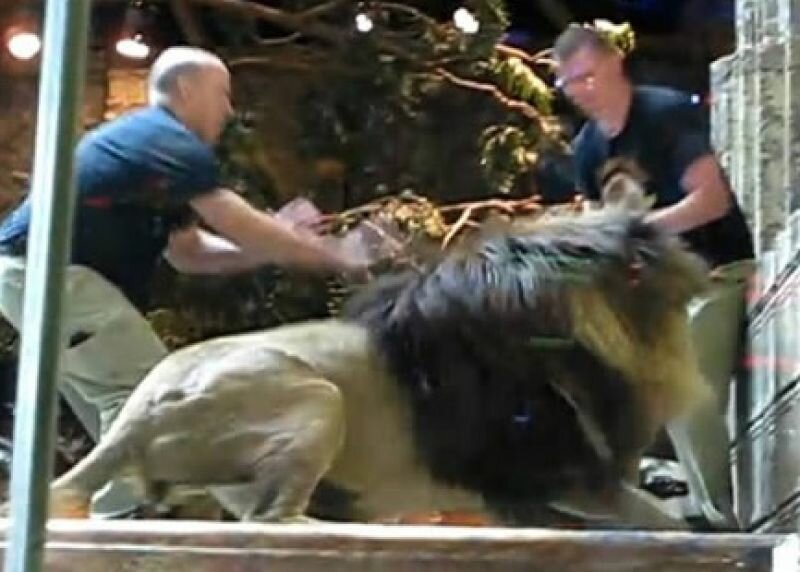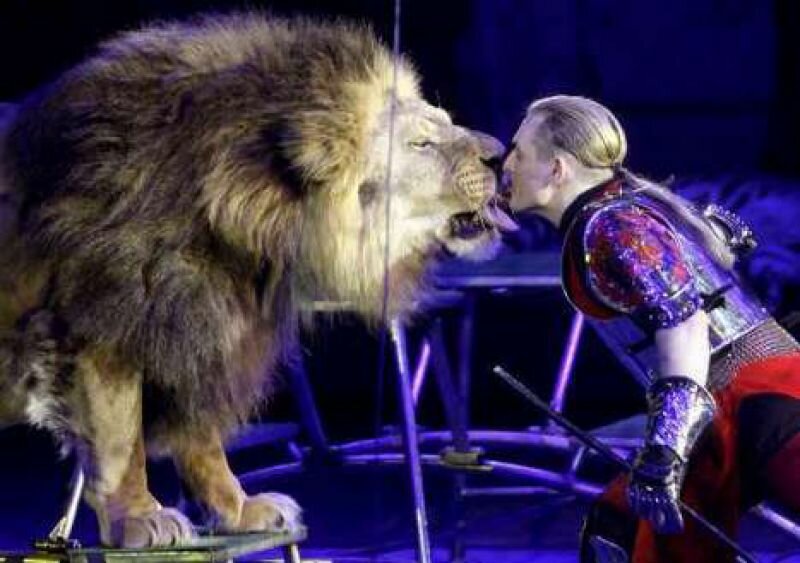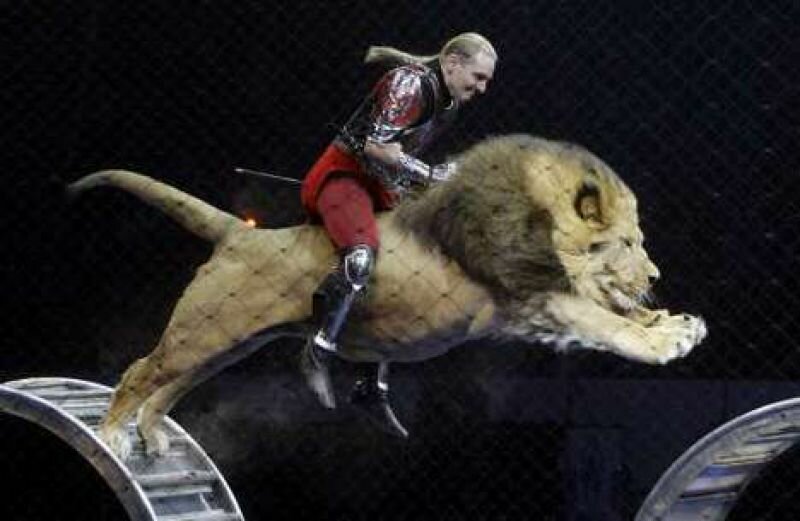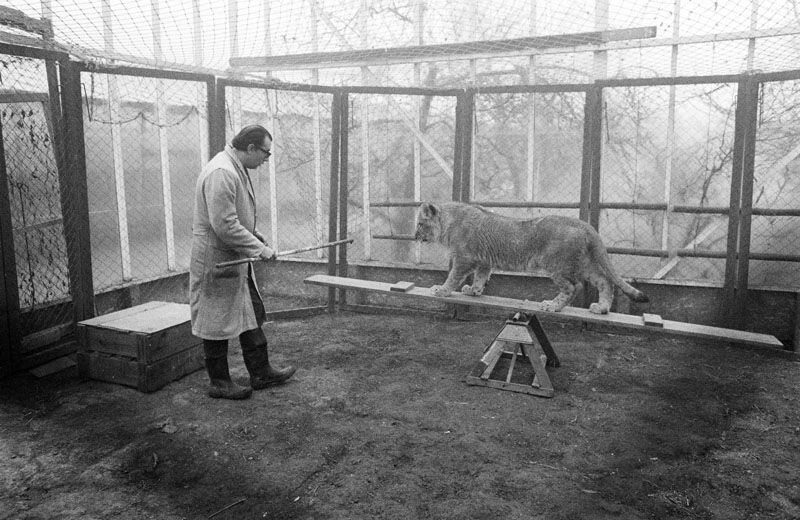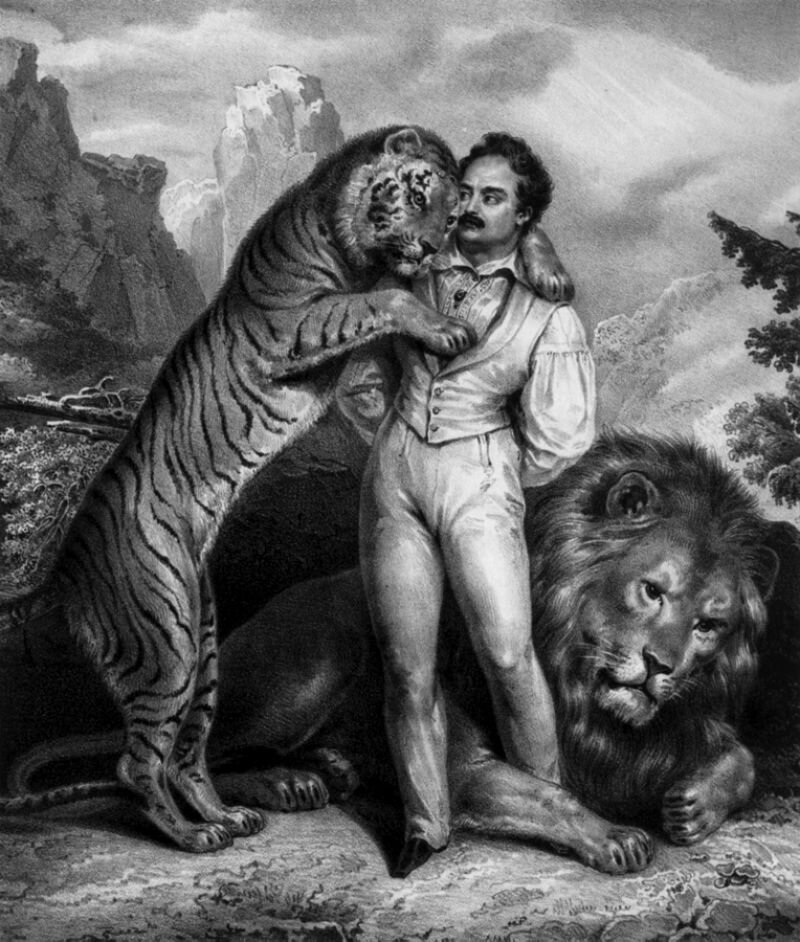If you’ve ever seen predators in a circus act, you’ll know how intense the experience is. You can smell and hear the animals, see their muscles flex, stare into their eyes. As you watch them perform with their trainer, they suddenly become personalities: awesome and dangerous.
The British animal trainer Alex Lacey's performance at the Carre's winter show was a work of art:an elegant ballet of harmony as he maneuvered the animals into various figures formed through simple actions like jumping, rolling, and sitting; all performed in a state of complete trust and compliance. The climax arrives the moment Alex dips his head between the jaws of the only male lion, Masai. Entwined, they are one, as though the boundary between man and animal has temporarily been lifted.
Placed completely at the mercy of his lion, this position is the ultimate demonstration of trust between a trainer and his animal.
‘I could never dominate my animals’, Alex explains, ‘so I must be their best friend.’ As a member of the audience, this is plain to see.
Circus animals are in the spotlight once again, although not on stage, but in politics. The issue at hand concerns twenty to thirty animals, that is, if we restrict our definition to semi-wild animals such as sea lions, tigers, lions, and elephants that according to some, maybe even you, should be prohibited from performing in The Netherlands.
The slurs and slander directed towards a regular, legal group of professionals and those affiliated –trainers are treated like near criminals, circus directors are threatened, and visitors to the circus are booed– poses some tricky questions. Does this hostile perspective on the circus world secretly contain a deep-rooted distrust to these ‘traveling folk’? The circus is traditionally associated with gypsies. ‘Bring in the laundry, the circus is coming’ is an old saying. Animal activists eagerly pounce on these gut feelings by hanging chains around their necks and gathering in front of the theatre during Carre’s winter show, conjuring images of gypsies forcing bears to dance on hot plates.
Do the animal activists realize that the Serbians, who traveled all over Europe from 1860 until the second World War with their dancing bears, had absolutely nothing to do with the circus? Or that dancing bears have been a thing of the past for a very long time? Even Hitler banned dancing bears from his Nazi Reich out of love for bears and hatred for the gypsies. How easy it is to destroy centuries of tradition and put people out on the street in that fit of rechtaberei and self-righteousness (look at how animal-friendly I am)!
The English research report, Wild Animals in Travelling Circuses, explores the physical and mental state of the animals through quantifiable factors such as their levels of stress hormones and the sizes of cages. The report, compiled by those both for and against, uneasily comes to a conclusion: ‘There appears to be little evidence to demonstrate that the welfare of animals kept in travelling circuses is any better or any worse than that of other animals kept in other captive environments.’ The predatory animals aren’t always kept in cages. Yes, it’s where they sleep, but during the day large roaming areas are set up. Dancing bears and cycling primates have long been banned. Even the tigers jumping through hoops have been abolished. And not because it hurts them. Animal trainer Tom Dieck described jumping through a burning hoop as being the easiest trick to teach an animal, because as long as they’ve never had a bad experience with fire, they won’t be afraid of it. But alas, the fire department has prohibited it.


